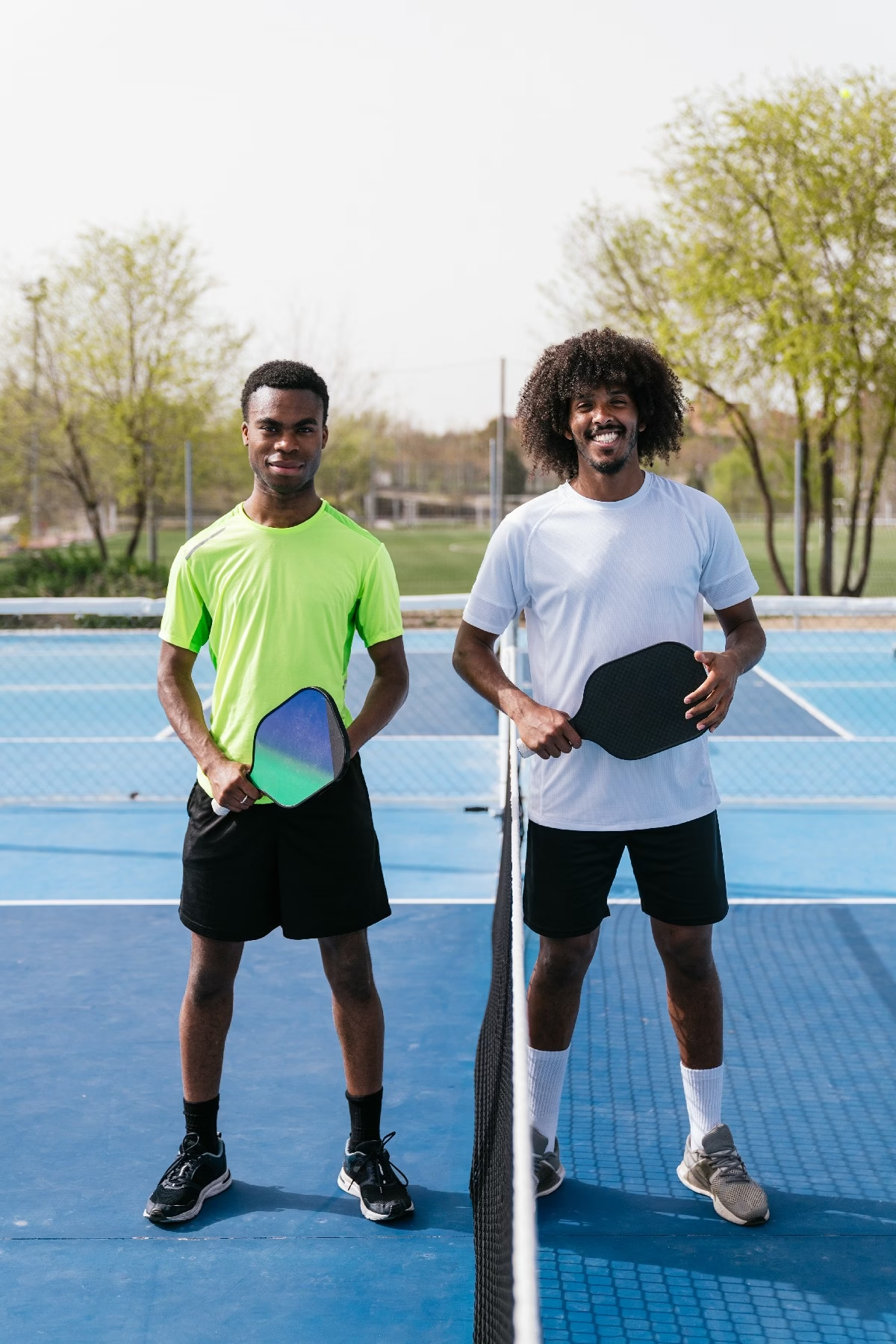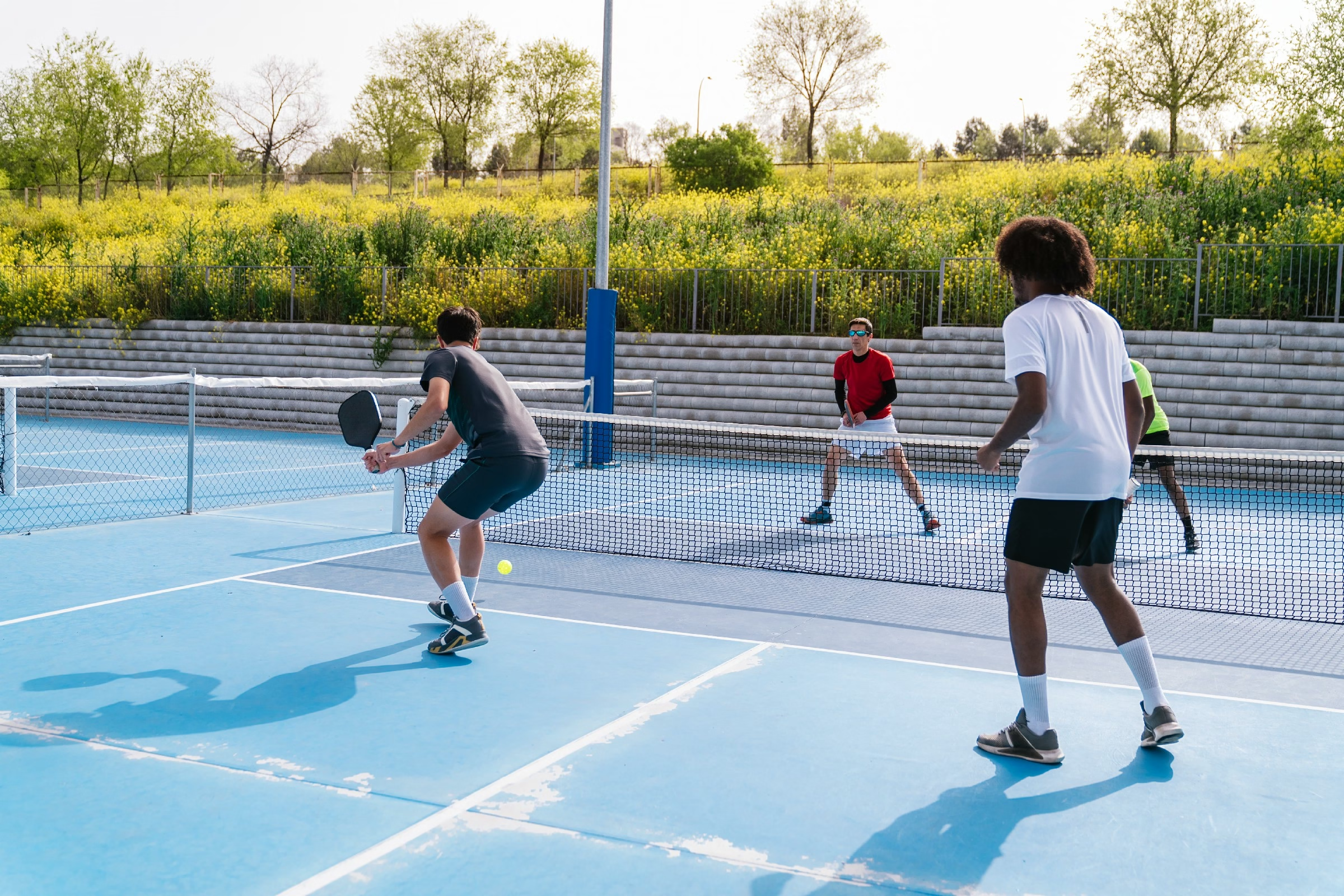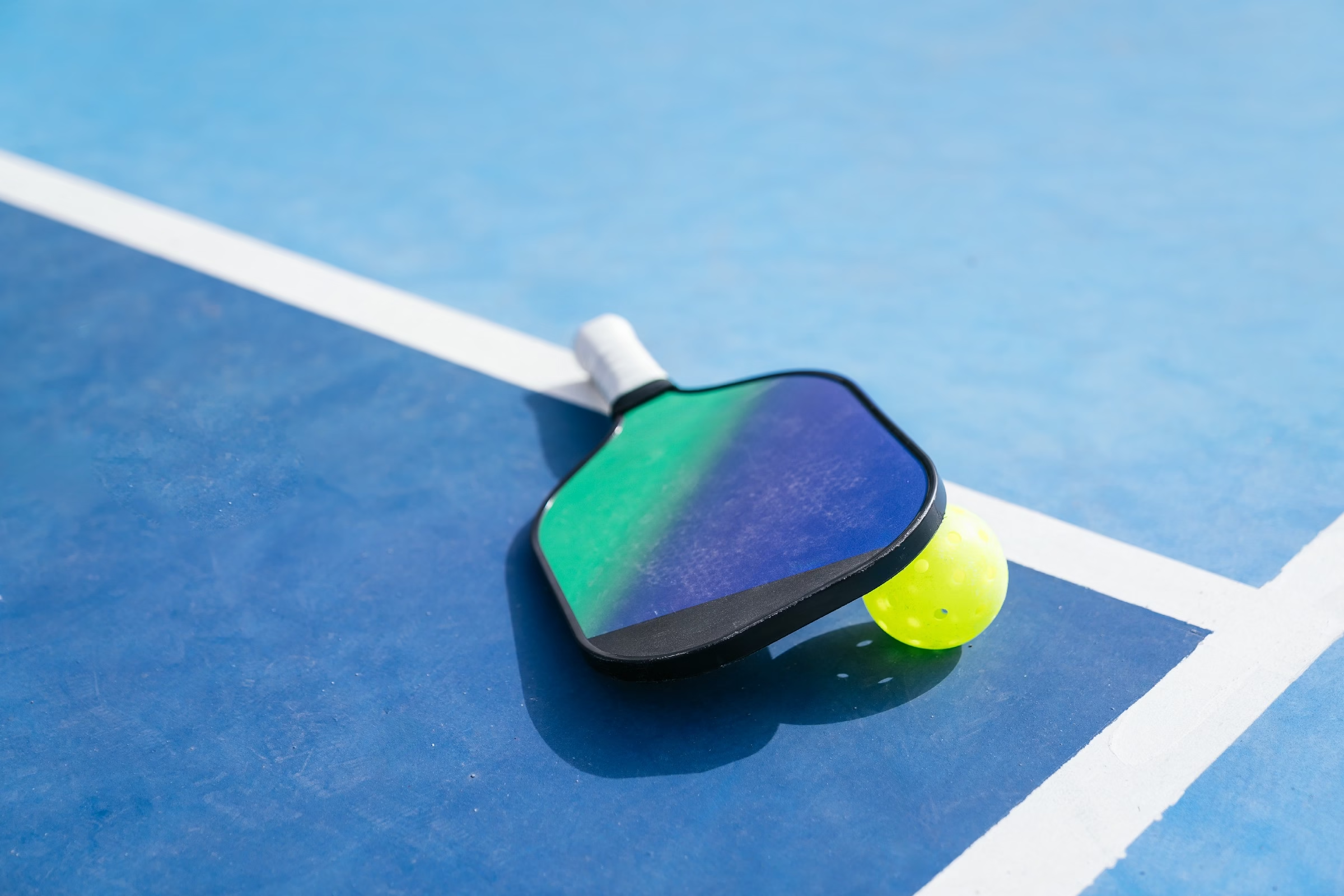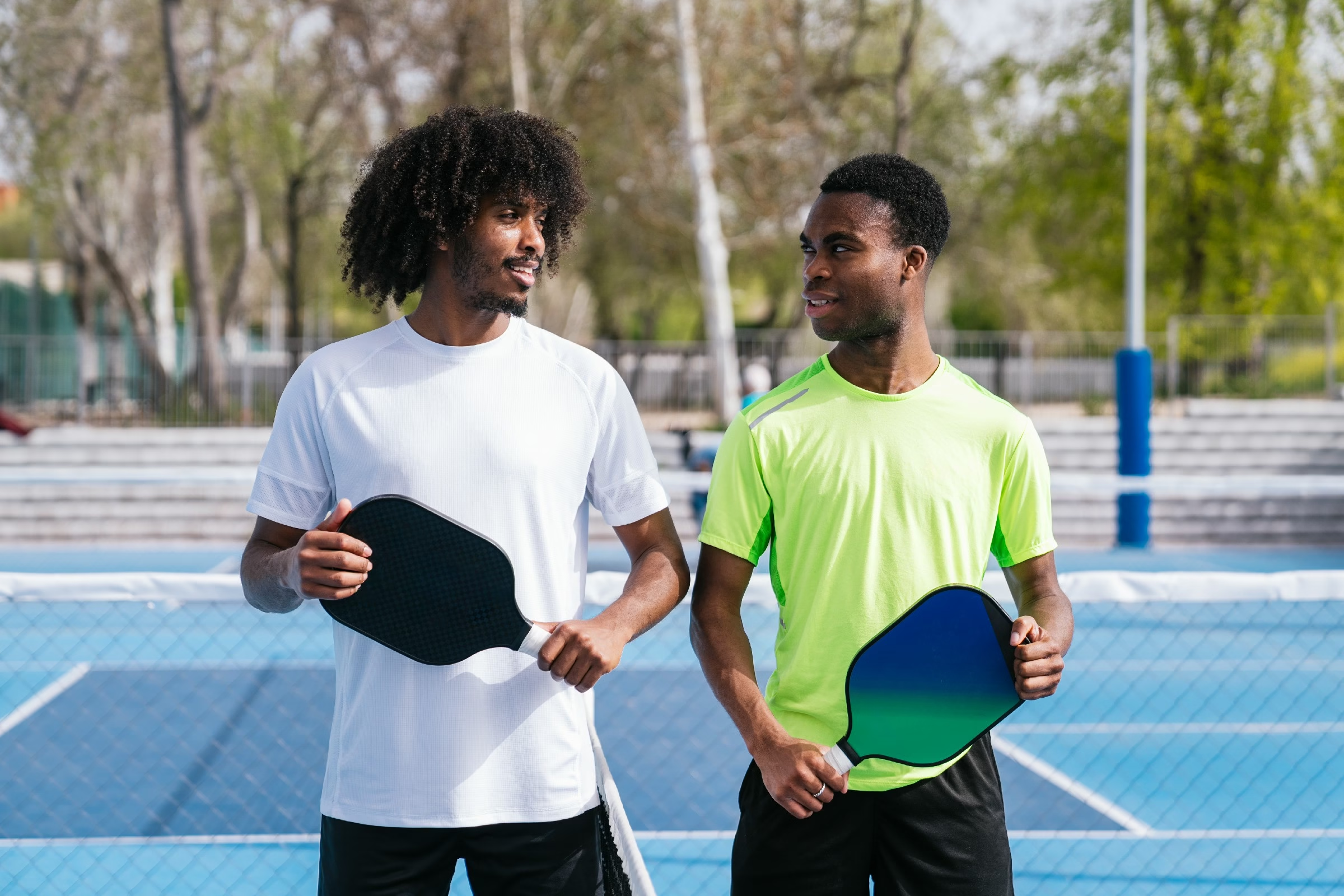Blog
how to store pickleball paddles
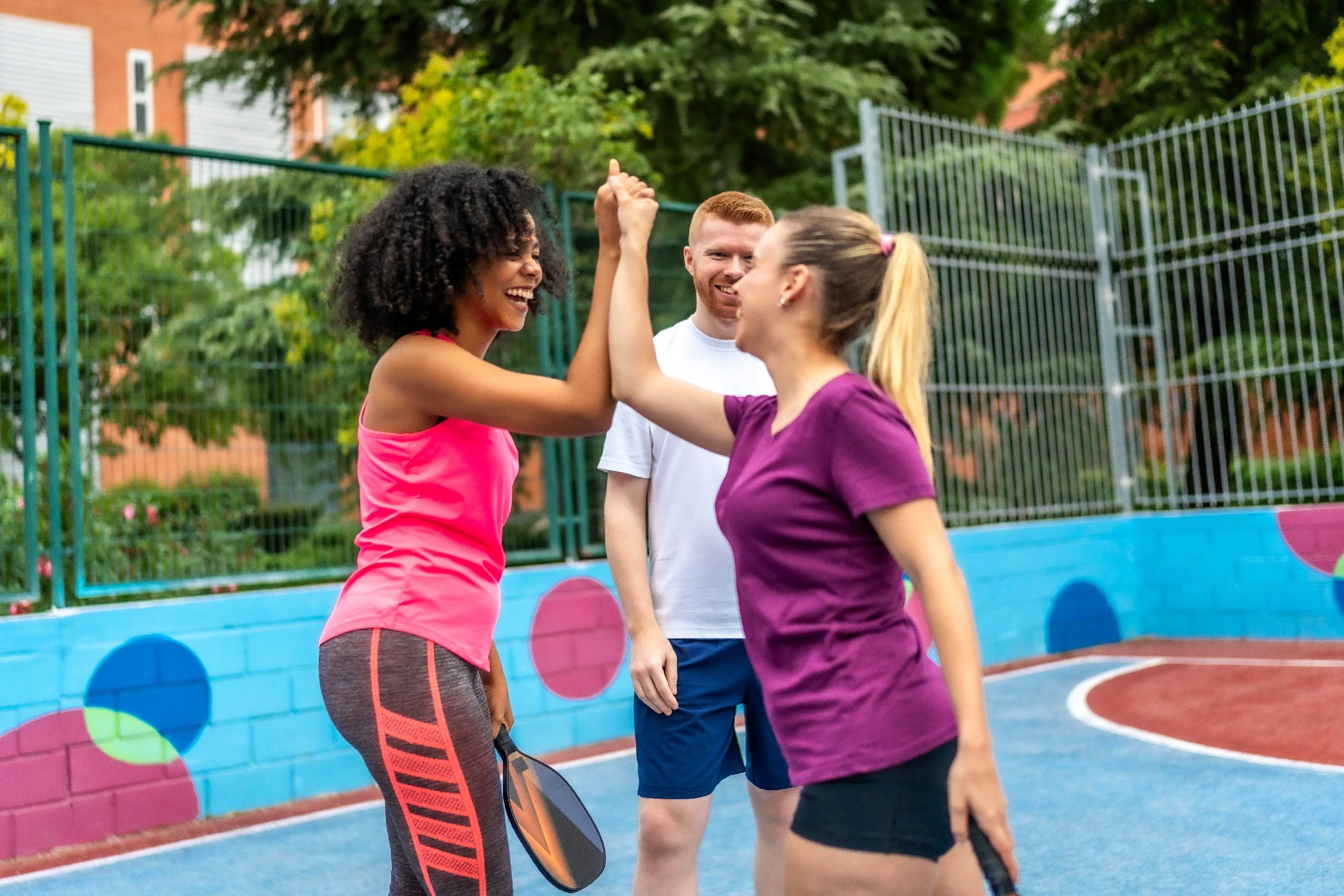
Storing Your Game: The Ultimate Guide to Pickleball Paddle Storage
In the vibrant world of pickleball, where skill meets strategy adn friendly competition unfolds with every serve, your trusty paddle serves as an extension of your game. But have you ever considered how the way you store these essential tools can impact their longevity and performance? Just like a finely tuned instrument, a pickleball paddle deserves a home that preserves its integrity and ensures it’s always ready to hit the court. In this article, we’ll explore the best practices for storing your paddles, including tips on temperature regulation, protective coverings, and space-saving techniques. Whether you’re an excited beginner or a seasoned pro, these insights will help you keep your paddles in peak condition, ensuring that each match is as exhilarating as the first. Let’s dive into the art of pickleball paddle storage and elevate your game beyond the court!
Table of Contents
- Choosing the Right Storage Location for Your Pickleball Paddles
- Understanding the Impact of Temperature and Humidity on Paddle Longevity
- Utilizing Protective Cases and Covers for Optimal care
- Organizing Your Equipment: Tips for a Dedicated Storage space
- Routine maintenance: Inspecting and Cleaning Your pickleball Paddles
- Traveling with Ease: Best Practices for Transporting Your Paddles
- Q&A
- To Wrap It Up
Choosing the Right Storage Location for Your Pickleball Paddles
Finding the ideal spot to store your pickleball paddles is essential to maintaining their integrity and performance. Consider the following factors to ensure your paddles remain in top shape:
- Temperature: Choose a climate-controlled area as extreme temperatures can warp the materials.
- humidity: A dry environment is preferable; excessive moisture can led to mold growth or damage.
- Accessibility: Select a location that allows for easy access so that grabbing your paddles before a game is hassle-free.
There are several options for storing your paddles effectively. Here are a few suggestions:
| Storage Option | Pros | Cons |
|---|---|---|
| Wall Rack | Showcases paddles, keeps them accessible | Takes up wall space |
| Storage Bag | Portable, protects from scratches | Less ventilation |
| Drawer or Cabinet | Discreet storage, dust-free | Can be out of sight, harder to access |
Lastly, consider organizing your storage to further enhance usability.A simple categorization system can save time when you’re gearing up for a match:
- By Size: Group paddles according to their dimensions to easily compare.
- By Type: Separate recreational paddles from competition-grade ones.
- By Condition: Keep worn paddles distinct from newer ones, helping you track which to replace or retire.
Understanding the Impact of Temperature and Humidity on Paddle Longevity
When considering the longevity of your pickleball paddles, understanding the roles of temperature and humidity is essential. Both extremes can greatly affect paddle materials, such as wood, fiberglass, and graphite.High temperatures, often felt during summer months or in poorly ventilated storage spaces, can lead to warping or deterioration of the paddle’s surface. Similarly, low temperatures might make the paddle brittle and more susceptible to cracks and damage upon impact. Ideal storage conditions should aim to keep paddles within a range of 60°F to 75°F for optimal maintenance.
Humidity levels also play a critical role in preserving paddle integrity. Excess moisture can encourage mold and mildew growth, causing damage to wooden paddles notably. On the other hand, overly dry conditions can lead to cracks and splits in the material. It is indeed recommended to maintain a humidity level of around 40% to 60%. To monitor these levels, consider using a hygrometer in your storage area to keep track and adjust as necessary.
| Condition | Impact on Paddles | Recommended Action |
|---|---|---|
| high Temperature | Warping,surface degradation | Store in a cool,shaded area |
| Low Temperature | Brittleness,increased cracking risk | Avoid extreme cold storage |
| High humidity | Mold growth,damage to wood | Use silica gel packs to absorb moisture |
| Low Humidity | Cracking,splitting | Consider a humidifier if necessary |
Utilizing Protective Cases and Covers for Optimal Care
To maintain the longevity and performance of your pickleball paddles,investing in protective cases and covers is essential. These accessories not only shield your paddles from accidental damage but also keep them clean and organized. Choosing a well-fitted cover can prevent scratches, dust accumulation, and other elements that could affect the paddle’s surface and overall functionality during gameplay.
When selecting a cover, consider the following features to ensure optimal protection:
- Durability: Look for high-quality materials that can withstand wear and tear.
- padding: A cushioned interior can significantly reduce the impact from drops or bumps.
- Weather Resistance: Opt for materials that can resist moisture and dust, especially if you plan to store paddles outdoors.
- Easy Access: Zippers or flap closures can allow quick access while ensuring the paddle remains securely housed.
| Type of Cover | Features | Recommended For |
|---|---|---|
| hard Shell Case | Heavy-duty protection, waterproof | Frequent travelers |
| Soft Padded Cover | Lightweight, cushioned | casual players |
| Mesh Bag | Breathable, lightweight | Indoor storage |
To further enhance the care of your paddles, consider using additional protective measures, such as towel wraps or sleeve protectors. These can be particularly useful when transporting your equipment to and from matches. Properly storing your paddles by placing them in their designated covers when not in use can prevent potential mishaps and ensure that your gear remains in top condition for every game.
Organizing Your Equipment: Tips for a Dedicated Storage Space
Creating a dedicated space for your pickleball paddles not only enhances the longevity of the equipment but also streamlines your game preparation. Start by selecting a suitable area, such as a closet, garage, or a corner of your home that can accommodate a storage unit. Consider using shelving, which can help maximize vertical space. Wall-mounted hooks or racks can also be excellent for hanging paddles, keeping them off the ground and easy to access. Think about incorporating the following storage solutions:
- Storage Bins: Use labeled bins to keep accessories like balls, nets, and towels organized.
- Wall Organizers: Install a pegboard for easy access to your paddles and other gear.
- Protective cases: Invest in padded cases to protect your paddles from damage during off-season storage.
Once your equipment is organized,consider implementing a system to rotate the paddles based on use and condition. This ensures that your preferred paddles are always ready while prolonging the lifespan of your entire set. A simple labeling system can work wonders; assign a tag to each paddle indicating its frequency of use or condition. A straightforward approach could be:
| Paddle Status | Usage Frequency |
|---|---|
| Active | Almost every game |
| Reserve | Occasional use |
| Retired | For display or nostalgia |
don’t forget about regular maintenance as part of your storage routine. wipe down paddles after each use to remove dirt and moisture, and check for any signs of wear or damage. Periodically reevaluate your storage solution to ensure it still meets your needs. Make it a fun part of your pickleball routine—consider setting a monthly reminder to tidy up and inventory your gear! This ensures that everything is in top condition, ready for your next game.
Routine Maintenance: inspecting and Cleaning Your Pickleball Paddles
Maintaining your pickleball paddles is essential for prolonging their lifespan and enhancing your gameplay experience. Regular inspection should be part of your routine, allowing you to identify any signs of wear or damage. Keep an eye out for:
- Cosmetic damage: Scratches and dents can accumulate over time and affect the paddle’s performance.
- Loose grips: Ensure that the grip is secure,as a loose grip can lead to mishandling during play.
- Deformities: Check for any warping or bending, which can drastically alter how your paddle strikes the ball.
Cleaning your paddles is equally significant, as dirt and debris can build up, impacting their performance. use a mild soap solution and a soft cloth to wipe down the surface of your paddles after each use. Follow these steps for effective cleaning:
- Prepare a cleaning solution: Mix water with mild soap to create a gentle cleanser.
- Wipe down: Use a soft cloth or sponge to gently clean the paddle face and edges.
- Dry thoroughly: Always dry the paddle with a clean towel to prevent moisture from damaging the paddle material.
Consider creating a dedicated maintenance schedule that includes cleaning and inspecting your paddles at regular intervals, such as weekly or bi-weekly, depending on your usage frequency. You could even maintain a simple tracking table to log your inspections:
| Date | Inspection Details | Cleaning Performed |
|---|---|---|
| MM/DD/YYYY | No damage found | yes |
| MM/DD/YYYY | Minor scratches noted | yes |
| MM/DD/YYYY | Grip replacement needed | No |
traveling with Ease: Best Practices for Transporting Your Paddles
Traveling with your pickleball paddles requires careful planning to ensure they remain in excellent condition. To begin, select a dedicated carrying case that offers ample padding and protection. Look for materials that are durable and water-resistant to keep your paddles safe from the elements.Investing in a hard shell case may also be beneficial if you frequently travel to tournaments or events.
when packing your paddles, always wrap them in a protective cloth or towel to prevent scratches or cracks. It’s essential to keep the paddles separated to avoid any unnecessary pressure on their surfaces. You can use dividers or small soft pouches within your carrying case. Avoid tossing multiple paddles in the same compartment,as this could lead to damages during transit.
Lastly, consider your mode of transportation. If flying, check airline regulations regarding sports equipment to avoid surprises at the boarding gate. If driving, secure your paddles well in the trunk or rear seat to minimize movement. For those who prefer biking or walking to the courts, look for backpacks or slings designed specifically for pickleball gear—these often feature compartments for both paddles and balls.
Q&A
Q: Why is proper storage of pickleball paddles important?
A: Proper storage of pickleball paddles is essential to maintain their shape and performance over time. Just like a fine instrument, a paddle needs care to ensure it operates at its best.Storing them incorrectly can lead to warping, cracking, or even delamination, all of which can affect your game.
Q: What’s the best environment for storing my pickleball paddles?
A: the ideal environment for your pickleball paddles is a cool, dry place, away from direct sunlight and extreme temperatures. Excessive heat can cause materials to expand and warp, while humidity can lead to mold or degradation, particularly in wooden paddles.
Q: Should I store paddles vertically or horizontally?
A: Ideally, you should store paddles horizontally to prevent bending or warping. Laying them flat in a dedicated paddle bag, or on a shelf cushioned with a soft cloth, is an excellent way to keep them safe. If you must store them vertically, ensure they’re supported well and not stacked in a way that could cause them to bow.
Q: Can I use regular household items for paddle storage?
A: Absolutely! Many players repurpose items they already have. For instance, a simple shoe rack can hold paddles perfectly, while a towel can serve as padding to prevent scratches. Just be sure that whatever you use offers adequate support and protection from impacts.
Q: How can I protect my paddles during transportation?
A: For transporting paddles, investing in a quality paddle bag or case is highly recommended. Look for one with padded compartments. If you don’t have a dedicated bag, a soft cloth or towel can be wrapped around the paddles to shield them from bumps and drops during transit.
Q: Is it okay to store my paddles with other sporting equipment?
A: while it is possible to store paddles with other sporting equipment, it’s wise to take precautions. ensure that nothing with sharp edges or heavy items is stacked on top of or pressed against your paddles. this helps prevent accidental damage and keeps them in prime condition for your next game.
Q: How can I know if my paddle has been damaged from poor storage?
A: Regularly inspect your paddles for signs of damage. Look for cracks, warps, or a compromised surface feel. If it seems to have lost its pop or feels uneven during play, it might be time for a replacement. Keeping track of the paddle’s performance can save you from surprises when you’re on the court.
Q: What should I do if I need to store paddles for an extended period?
A: If you’re planning to store paddles for a long stretch—like during off-seasons—clean them thoroughly to remove dirt or moisture and ensure they’re entirely dry. Store them in a protective bag or container, and check the storage conditions periodically. This way, they’ll be waiting for you in tip-top shape when you’re ready to play again!
Q: Can I store my paddles on a pegboard or hooks?
A: While pegboards or hooks can be useful for space-saving, be mindful of how the paddles are positioned. If you choose this method, ensure that they are hung in a way that doesn’t apply pressure to them, preferably using paddles that support their weight without deformation. Adding some padding to the hooks can also help protect the paddle’s finish.
With these tips in hand, you’ll be ready to store your pickleball paddles wisely, ensuring they remain in great condition and are always game-ready!
To Wrap It Up
As you embark on your pickleball journey, remember that the care you give to your equipment reflects your commitment to the game. By thoughtfully storing your paddles, you not only extend their life but also enhance your playing experience. Whether you choose a dedicated paddle bag, a wall-mounted rack, or simply a designated drawer, the key is consistency and consideration. As you place your paddles in their chosen home, envision the matches ahead, the friends you’ll meet, and the skills you’ll hone. With proper storage habits, your paddles will be ready to serve up excitement and competition whenever you are. So, take these tips to heart, and let your passion for pickleball thrive, one well-kept paddle at a time. Happy playing!


